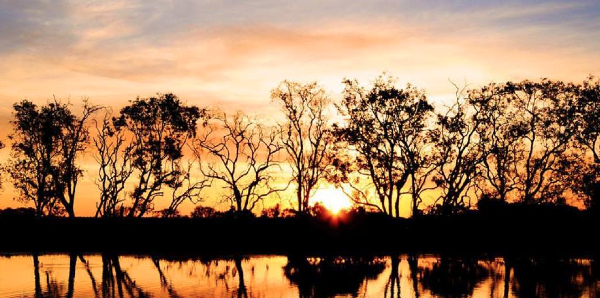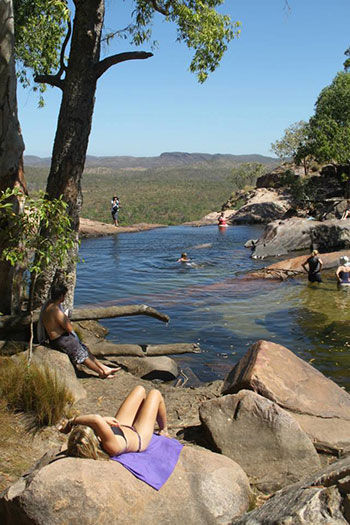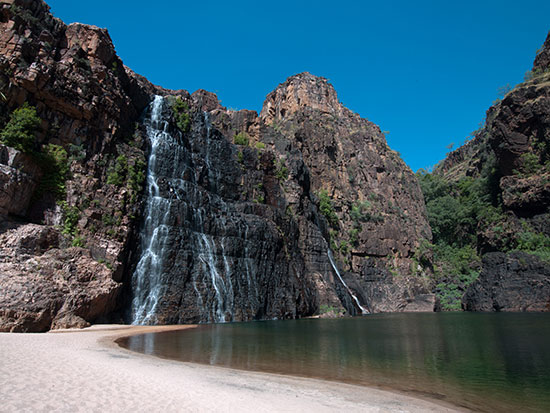
Kakadu Travel Guide
Discover Australia’s biggest National Park
Fun fact – Kakadu National Park is roughly the size of Slovenia, so with 20,000 kilometers squared to explore, she’ll certainly keep you busy!
Amongst an ever-changing landscape of desert, lakes, forest, wetlands and escarpments, there are bountiful pieces of natural beauty coexisting next to some real Aussie wildlife. And when we say real Aussie wildlife we mean the likes of massive saltwater crocs, monitor lizards, turtles and more!

If we had to choose the highlights, it would have to be Twin Falls and Jim Jim Falls. Whether they’re in full cascade during the wet season (November til March) or dried up in the dry season, the actual rock formations are spectacular. In face, Jim Jim Falls is so spectacular that the water falls from a 150 metre height into a rock pool below – so if there’s one thing you need to see whilst visiting Kakadu – make sure it’s this waterfall!
However, as we said, Twin Falls isn’t to be overlooked. This waterfalls gives you a real taste of tropical paradise as they lead to a sandy beach below creating an idyllic place to cool off.
Exploring Kakadu National Park isn’t just about seeing the flora and fauna however, as you have the chance to learn more about the traditional landowners as well as seeing some ancient Aboriginal rock art. Another fun fact – the Aboriginal traditional landowners of Kakadu National Park have been living in the area for 40,000 years and are subsequently the longest continuous surviving human culture in the entire world!

Best time of year to visit Kakadu
Thanks to the knowledge of the local Aboriginals, they have denoted that there are six seasons that take place throughout the year in Kakadu, meaning there are different things to see at different times of year. From December to March the season is known as Gudjewg and temperatures are at 24 – 34 Celsius. At this type of year you can expect tropical thunderstorms, heavy rain and flooding. This is also when you’ll find Magpie Geese nesting.
Come Banggerreng – also known as April, temperatures remain the same, however the rain lets off but you may get the odd ‘Knock ‘em down storm’ which can damage the new plants as they attempt to grow. Yegge from May to mid June is when the locals will often burn some of the land to encourage growth, and temperatures are a little more bearable having cooled off somewhat.
The cool season from mid June to mid August sits at around 17-32 Celsius is when the dry season (Wurregeng) begins and the burning continues. As the billabongs and creeks shrink wildlife crowd around the waters as it becomes scarce. From mid August to October temperatures begin to rise again as Sea turtles come on shore to lay their eggs, and from October – late December Gunumeleng takes place as the land prepare once more for the wet season. With the ever changing weather of the Kakadu region it’s important to plan your trip.
View Kakadu tours here
